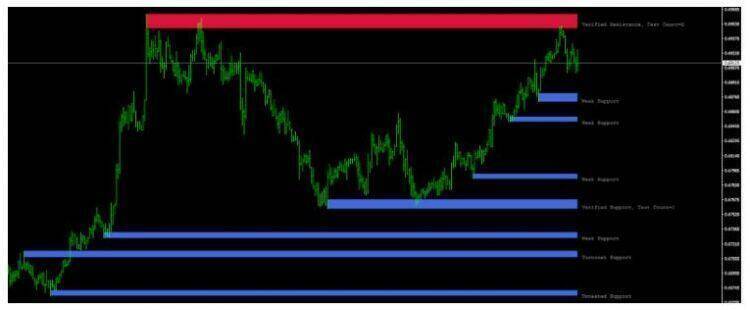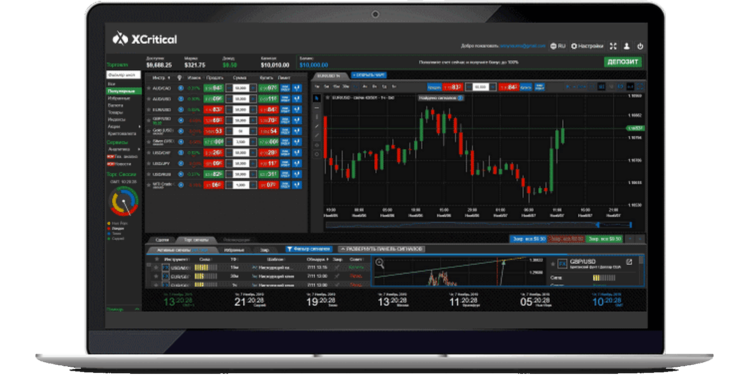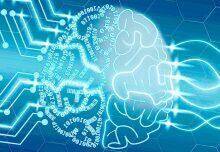Contents:


But, information is still limited in scope to the specific area the “organized or structured data” supports. Intelligence, produced through a reliable and repeatable process – by personnel specifically trained to conduct such work – is what makes sense out of chaos. Intelligence helps leaders understand the quantity and quality of the information analyzed, puts that body of inputs into context and connects dots and prioritizes actions. Intelligence empowers leaders to make reasoned and informed decisions that align with organizational needs and objectives.
When decision makers are presented with wrong data, the results can be disastrous. And these problems can get amplified if bad data is fed to automated systems. As an example, look at the series of man-made and computer-triggered events that brought about a billion-dollar collapse in United Airlines stock. In conclusion, the difference between data and information is vital in today’s world where the amount of data being generated is growing exponentially. The data collected from your system may be entered into the excel sheet as needed and then modified to the necessary information utilizing its cutting-edge technologies.
- The data gathered by the researcher or observer may or may not be useful.
- The average score of a class or of the entire school is information that can be derived from the given data.
- However, there can be several roadblocks to creating that sort of data-driven organizational culture.
- Without such advancement, these jobs would not be entertained.
Based on these definitions, there is no information resource, because timeliness and relevancy cannot be managed or stored. When specific information and general information are stored, they become part of the data resource, they are treated as data and are managed like any other data. Those data will only become information again when they become relevant and timely. Stored knowledge becomes data and is managed like any other data. Those data will only become knowledge again when they are extracted as information, combined with experience, and retained.
What Is Data: Types of Data, and How to Analyze Data?
Time-stamped data is a dataset which has a concept of time ordering defining the sequence that each data point was either captured or collected . For a start, we’re not sure how we are supposed to refer to it, that is – data is the plural of datum. Strictly speaking we should talk about data that ‘are’ not ‘is’ available to support a theory etc.

Information is typically presented through words, language, thoughts, and ideas. Quantitative data is provided in numerical form, like the weight, volume, or cost of an item. Ultimately, you can use the two components together to identify and solve problems. Below, take a deeper dive into data vs information and how these elements can be applied in a business environment.
So, when the data is transformed into information, it never has any useless details. It lets you choose files, folders, partitions or disk to back up to external hard drive, USB, network drive, etc. This software also supports schedule automatic backup and file sync. For data security, it’s also advised you regularly make a backup of important data to avoid data loss. In computer technology, data is the input while information is the output.
Comments: Data vs Information
It’s an integrated approach to identifying, sharing, and evaluating the organization’s information. It’s a culture for learning where people are encouraged to share information and best practices to solve business problems. Information is delineate because the structured, organized, and processed data, conferred inside context, that makes it relevant and helpful to the one who desires it. Data suggests that raw facts and figures regarding individuals, places, or the other issue, that is expressed within the type of numbers, letters or symbols. Is by far the most common language for creating and manipulating databases. You’ll find variants of SQL inhabiting everything from lowly desktop software, to high-powered enterprise products.
Bharath Gowda, vice president for product marketing at Databricks points at genomics data as another area that needs specialist understanding. Genomics data involves analysing the DNA of patients to identify new drugs and improve care with personalized treatments. Open data is only useful if it’s shared in ways that people can actually understand. It needs to be shared in a standardized format and easily traced back to where it came from. Simply put, machine data is the digital exhaust created by the systems, technologies and infrastructure powering modern businesses. As a result of all this polymorphism today, many software developers are looking towards more flexible alternatives to relational databases to accommodate data of any structure.
Japanese urban household carbon footprints during early-stage … – Nature.com
Japanese urban household carbon footprints during early-stage ….
Posted: Wed, 29 Mar 2023 10:57:30 GMT [source]
Data are simply facts or figures — bits of information, but not information itself. When data are processed, interpreted, organized, structured or presented so as to make them meaningful or useful, they are called information. For example, a set of data could include temperature readings in a location over several years. Without any additional context, those temperatures have no meaning. However, when you analyze and organize that information, you could determine seasonal temperature patterns or even broader climate trends.
What is Data?
However, only relevant information leads to knowledge and non-relevant information does not lead to knowledge. Therefore, raw data are wrapped with meaning to become data in context, which can become either relevant or non-relevant information. A major part of that lexical challenge is the terms “data,” “information,” and “knowledge.” These three terms are often misused, abused, and used interchangeably to the point that their real meaning is often unclear. These three terms must be formally defined – in order to create a data-information-knowledge cycle – and consistently used to begin resolving the lexical challenge and creating a formal Data Management profession. Research process starts with the collection of data, which plays a significant role in the statistical analysis. We quite commonly use the term ‘data’ in the different context.
National contributions to climate change due to historical emissions … – Nature.com
National contributions to climate change due to historical emissions ….
Posted: Wed, 29 Mar 2023 09:41:43 GMT [source]
Data is a raw form of knowledge and, on its own, doesn’t carry any significance or purpose. In other words, you have to interpret data for it to have meaning. Data can be simple—and may even seem useless until it is analyzed, organized, and interpreted. Data is defined as a collection of individual facts or statistics. (While “datum” is technically the singular form of “data,” it’s not commonly used in everyday language.) Data can come in the form of text, observations, figures, images, numbers, graphs, or symbols.
Types and Uses of Data
The job of a Database administrator is to set up the databases then maintain and secure them at all times. Third, in the list of the top 5 jobs in data is “database developer.” They are mainly focused on improving the databases and developing new applications for better use of data. Here, data science is used for analyzing medical images, Genetics, and Genomics. And lastly, it is of great advantage for becoming a virtual assistant for patients. Data can be structured, tabular data, graph, data tree whereas Information is language, ideas, and thoughts based on the given data. Data does not have any specific purpose whereas Information carries a meaning that has been assigned by interpreting data.

And of course there’s also the open source MySQL (whose stewardship now sits with Oracle as part of the firm’s purchase of Sun Microhow is information different from data). Given this popularity, if you’re going to learn one language for database use, SQL’s a pretty good choice. And for a little inspiration, visit Monster.com or another job site and search for jobs mentioning SQL.
How is Data Stored?
The scattered https://traderoom.info/ is not helpful in decision making while information generally plays a role in decision making. “Formatted data” is data “in a form.” Its values are arranged to conform to a predefined structure or shape. A noisy signal is analyzed, and the noise is reduced or removed, to accentuate the signal or isolate it completely. In the example above, the relevant data is the sound of the piano.
If you are looking for a particular data set and cannot find it through Internet searches or our Science Data Catalog… Information is a set of data in context with relevance to one or more people at a point in time or for a period of time. Information is more than data in context – it must have relevance and a time frame. With each step up the pyramid the user gains context and understanding, moving from a basic state of being informed to a point of understanding that can support educated decisions. Webster’s defines data as “factual information used as a basis for reasoning, discussion, or calculation.” 1 This means we are not talking about opinions or analysis, but simply raw materials that are the fuel for analytic work.
The right data can lead to nearly limitless information and insights—all invaluable for decision-making. ZDNET’s recommendations are based on many hours of testing, research, and comparison shopping. We gather data from the best available sources, including vendor and retailer listings as well as other relevant and independent reviews sites. And we pore over customer reviews to find out what matters to real people who already own and use the products and services we’re assessing. Looking at the situation the other way around, all information and knowledge were data at one time, whether or not they were stored in the organization’s data resource.
This app is a straight line to the Bing AI chatbot, with the benefit of not having to access a website when you want to use it. At the time of this publication, if Edge users log into their account, they should be able to access Microsoft’s new AI-powered Bing right away. Microsoft defaults to clearing your conversations when you click the New Topic button, so your conversations aren’t saved beyond the duration of each. However, search history is saved in your account, depending on your settings.

Data versus Information comparison chart DataInformationMeaning Data is raw, unorganized facts that need to be processed. Data can be something simple and seemingly random and useless until it is organized. When data is processed, organized, structured or presented in a given context so as to make it useful, it is called information. The average score of a class or of the entire school is information that can be derived from the given data.
Nowadays, more and more companies are starting to rely on data managers to extract out the most useful information from massive amounts of data. Mentioned below are the uses of Data that explain how becoming a data scientist is the right choice to make. If you try to recover data from an external drive, you should connect it to your computer first. However, only the right interpretation of the data can lead us to the right way, the incorrect interpretation of data can mislead us to the wrong conclusion and take the wrong action.
After analyzing the RAW data, the processed data becomes useful information. Information is the knowledge that is remodeled and classified into an intelligible type, which may be utilized in the method of deciding. In short, once knowledge end up to be purposeful when conversion, it’s referred to as info. It’s one thing that informs, in essence, it provides a solution to a specific question. It may be obtained from numerous sources like newspapers, the internet, television, people, books, etc. Similarly, data processing identifies meaningful data, and separates it from the meaningless data.
